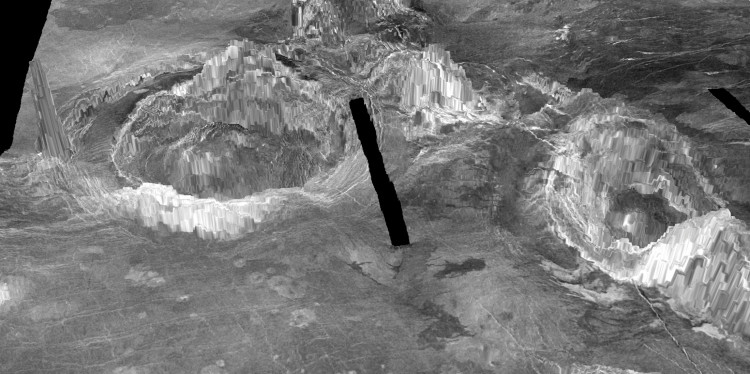For the longest time, it was hypothesized that Venus, like the mighty Earth, is a planet with a chock-full of active volcanoes. Now that hypothesis is backed by new evidence.
Planetary researchers have identified three dozen features on Venus that look like they have just been recently active -- and probably still are to this day. These structures come in the form of doughnut-shaped, rocky features that astronomers call coronae.
"For the first time, we were able to pinpoint specific structures and say, 'Look, this is not an ancient volcano but an active one,'" says study co-author Laurent Montési, a professor of geology at the University of Maryland.
The study, led by Anna Gülcher, a geophysicist at the Swiss Federal Institute of Technology in Zürich, Switzerland, describes how the team used 3D simulations to model how the coronae on Venus' surface forme and grow.
Though a lot of these coronae have been found to be inactive, 37 of them appeared to have been active within at least the last few million years, which in geological time is like a blink of the eye.
The study, published this week in Nature Geoscience, "adds to a growing groundswell of evidence that Venus is geologically active," says Suzanne Smrekar, astronomer and principal investigator of NASA's VERITAS.
Researchers plotted all the coronae on a map of Venus according to how their activity was classified. Much to their surprise, most of the coronae overlying active mantle plumes form a belt in Venus' southern hemisphere. Only a few active plumes can be found outside this band.
"We called this band the 'Ring of Fire' on Venus in reference to the 'Ring of Fire' on Earth," Gülcher said.
Because Venus lacks the plate tectonics that contributes to the reshaping of the Earth's surface, many scientists believe that the planet had been dormant for the past half billion years. This is how the study of coronae contributes a whole lot to understand more of Venus.
Coronae are essentially, signs of ancient activity on the surface of Venus, which had since stopped. A lot of researchers have resorted to the belief that the planet had cooled to the point where any hot material near the core would find it challenging to go up to the surface. But with this new study, that belief is being changed.
Studies like these do not just educate us about Venus, but how the hellish planet and ours -- which is habitable -- have led such drastically different paths of evolution.




